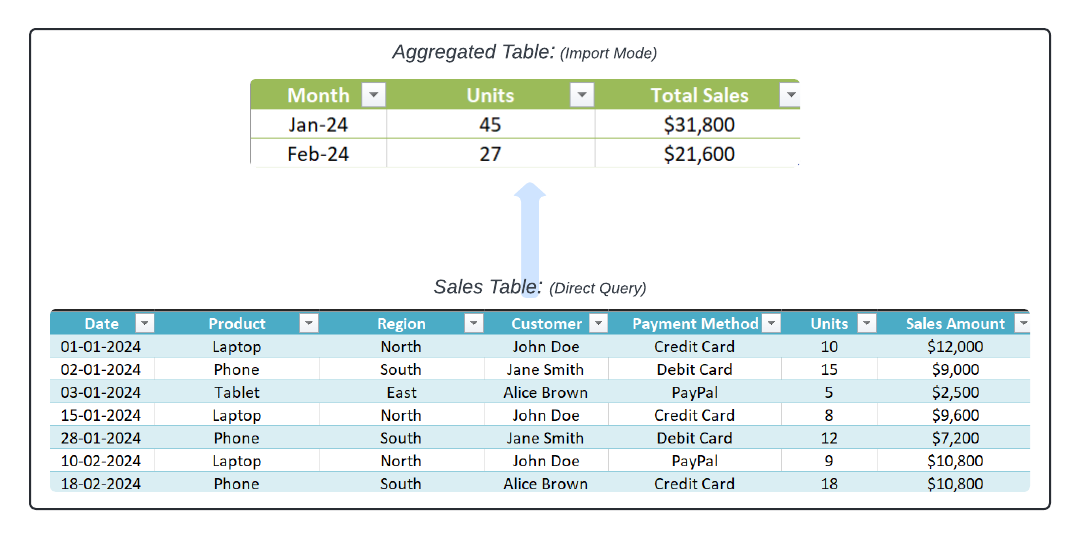Foundations of Semantic Models
Data Ingestion and Semantic Models with Microsoft Fabric

Alex Kuntz
Head of Cloud Curriculum, DataCamp
Default Semantic Model
Power BI Default Semantic Model
- Creation: Automatically generated when a Lakehouse or Warehouse is created.
- Editing: Edited via the SQL Analytics Endpoint - model section.
- Features:
- Supports basic relationships and calculations
- Lacks support for advanced calculations and security
Custom Semantic Model
Power BI Custom Semantic Model
- Creation: Created using New Semantic Model option in Lakehouse or Warehouse.
- Editing: Provides a full-featured Data Model editor.
- Features:
- Full control over complex relationships and advanced calculations
- Supports Advanced Features - calculated columns, hierachies, RLS, etc.
Brief Overview of Dataset Modes
Import Mode
- loads data in model; fast queries response.
- Requires updates to keep data up-to-date.
DirectQuery Mode
- Queries live data directly from the source.
- Query Response is slower.
Direct Lake Mode
- Directly queries data from the OneLake.
- Real-time access to data with no latency.



Composite Dataset Mode
Combines Import and DirectQuery modes in one dataset.

Choosing the Mode:
- Use Import mode for static data and DirectQuery for real-time updates.
Key Considerations:
- Ideal for datasets with mixed data needs.
- Managing both modes adds complexity.
User Defined Aggregations
What are Aggregations?
- Summarizes large data into smaller, easier-to-query tables.
When to Use Aggregations?
- For large datasets slowing down reports.
- Build reports on summary-level data (e.g., monthly sales).
Benefits of Aggregations
- Improves performance by reducing query time and data processing load

Large Datasets in Power BI Premium
Large Dataset Format
- Supports datasets over 10 GB with dedicated storage.
- Provides highly compressed in-memory storage for faster queries.
Features
- Allows incremental refresh for growing datasets.
- Supports XMLA endpoint for efficient write operations.
Let's practice!
Data Ingestion and Semantic Models with Microsoft Fabric

